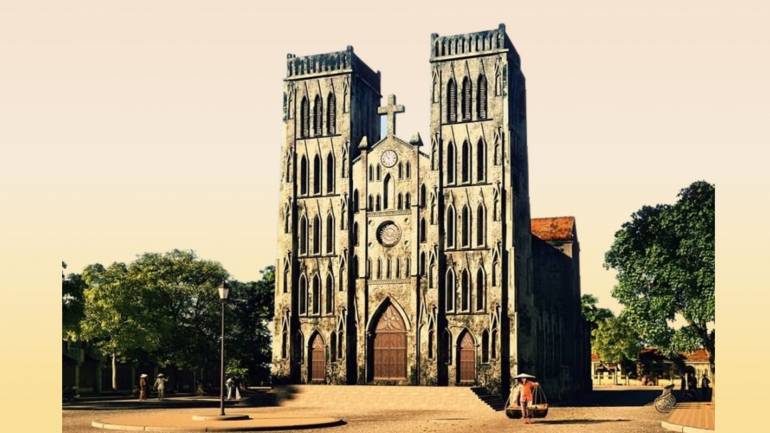The Resilient Cathedral: A Testament to Faith and History in Hanoi

Churches across Hanoi and other parts of Vietnam began to hold Mass again under the socialist government, allowing the faith to flourish anew.
Closed down by the North Vietnamese communist government after the Geneva Accords and the withdrawal of the French colonists in 1954, this cathedral has stood the test of time despite the wars that devastated most of Hanoi.
The cathedral witnessed the 19-year Vietnam War—a proxy conflict between the United States and the Soviet Union that spanned Vietnam, Laos, and Cambodia.
Vietnamese revolutionary soldiers also found refuge in this massive neo-Gothic structure during the war.
Officially fought between North Vietnam and South Vietnam, the war saw the US and its allies supporting South Vietnam, while the Soviet Union and China backed North Vietnam.
The war extended into Laos and Cambodia, which also became communist states in 1975. The conflict ended when North Vietnam and the Vietcong, an armed movement in South Vietnam, captured Saigon in 1975, leading to the reunification of Vietnam.
Despite the war and the subsequent reunification, the cathedral remained closed for many years. Built-in 1886 during the French colonial period, the cathedral is the oldest church in Hanoi.
It stands on the former site of a Buddhist pagoda, which was regarded as the largest in Vietnam during the Ly-Tran dynasty (1009-1400 AD), a golden age of Buddhism in Vietnam.
The pagoda was dismantled to make way for a market before the cathedral was constructed on the site.
Architecturally, the cathedral resembles its French counterpart, Notre Dame de Paris. It features two square towers, each 103 feet tall, housing five bells.
Renovated in 2022, the cathedral's pointed arched windows and doors, made of imported French stained glass, and its high rib-vaulted ceiling, are hallmark features of Gothic architecture.
Despite its Western design, the cathedral retains Vietnamese cultural elements. The baked clay bricks, red tiles, and pasteboard walls are reminiscent of Vietnamese Buddhist temples.
The red and golden woods of the altars also reflect traditional Buddhist temple aesthetics.
Inside, rows of brunette pews provide a classic contrast, blending Western and oriental styles harmoniously.
A copper statue of Mary stands on a pedestal, surrounded by green lawns, in front of the cathedral.
During the French colonial period, the Catholic faith spread throughout northern Vietnam, with the cathedral serving as a faith center.
However, after the French departure in 1954, the communists cracked down on religious practices, and the cathedral was closed.
Following decades of restrictions, the socialist government officially recognized religious freedom with an executive order issued by Ho Chi Minh in 1995.
However, as early as 1990, the cathedral reopened its doors, celebrating Mass on Christmas Eve.
Churches across Hanoi and other parts of Vietnam began to hold Mass again under the socialist government, allowing the faith to flourish anew.
The Catholic Bishops Conference of Vietnam was established in 1980, and in 2007, the Catholic Church began the beatification process of Cardinal Nguyễn Văn Thuận, who was imprisoned by the communists for 13 years, including nine years in solitary confinement.
At present, Vietnam has 27 dioceses, including three archdioceses. The country's churches draw pilgrims and tourists alike, attracted by their rich heritage and beautiful architecture.








